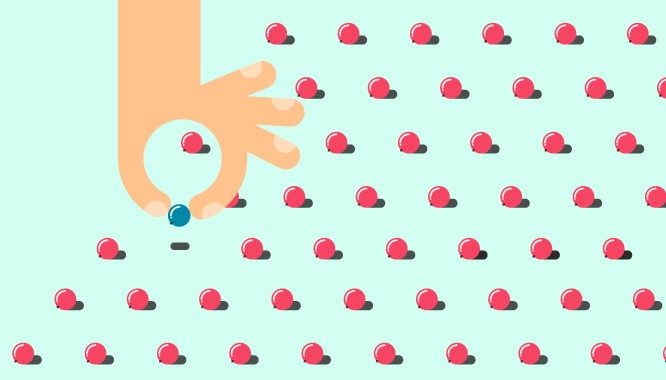The benefits and harms of perfectionism
The benefits and harms of perfectionism
Maxim Shaikhalov, an interface designer and web designer, wrote an article on Medium in which he shared his opinion on perfectionism in design projects.
Every techie (and designers are techies) is a creepy perfectionist at heart. The unaligned lettering on the buttons has terrible nightmares, forcing to check the layout in the morning. What can we say about layouts, once I was too lazy to throw the box out from under the new OOPS, but as soon as I noticed the curve kerning and alignment, the box immediately disappeared into the nearest trash can.
Similar sensations arise when you submit a design for layout. Everything looks like it’s not your design. But the product works, and the development team does not see a dozen small jambs (sometimes I think that only I can see them). After all, the team believes that instead of fixing a bunch of invisible design bugs, you can implement a feature that users need so much.

If you are a perfectionist, you should cry with me. The designer is responsible for product appearance and interaction. He and no one else. Is always. There is no need to blame everything on crooked layout designers, a dumb manager and an inadequate client. Only a designer stands in the way of chaos and global entropy. And he must stand firm no matter what.
Pros and cons
Many of you will probably ask, “How does the product improve if we move this line down 5px? Will it boost sales? “
Yes and no. A balance has to be struck between polishing design and product development. If releasing a new feature or fixing bugs is critical and can lead to big losses, then it’s not up to the design details.
The devil is in the details
As they say, “the devil is in the details” (hello littlebigdetails.com). Users decide whether to trust a particular online service by evaluating design and interaction. If the trust of your customers is important to you, then do not forget even the smallest details. Many studies state that the accuracy of details definitely increases trust.
Think of the pixel-perfect Apple interfaces or the bunch of cool goodies in the Mailchimp interface. The elaborate details evoke positive emotions.
This involves a very interesting cognitive distortion: if interaction with a product brings positive emotions, then the interface is perceived as cooler and more convenient. This is one of the secrets of the iPhone.
Thanks to this, working with the interface becomes a game, and any problems seem like interesting quests. The saying “this is not a bug – this is a feature” is a clear proof of this.
How perfectionism interferes with work
On the other hand, perfectionism, as a character trait, very often interferes with work. Remember the situation when you need to finish a project in a day, but minor roughness does not allow it to be completed.
Lack of perfectionism is an important feature of many businessmen. It doesn’t matter how perfect the idea is, if it works. Excessive pedantry often prevents you from launching a project on time (and most likely will not allow you to launch it at all until everything is perfect). From a business point of view, the more rational approach of Richard Branson (“to hell, take it and do it”).
As a conclusion
In many situations, perfectionism only hurts, but if you have the resources to polish all the details to perfection, then it is definitely worth it. The reward for your efforts will be user trust and an emotionally pleasing product.
How do you feel about perfectionism? Does he hinder or help you?
Cover photo: ShutterStock
…

